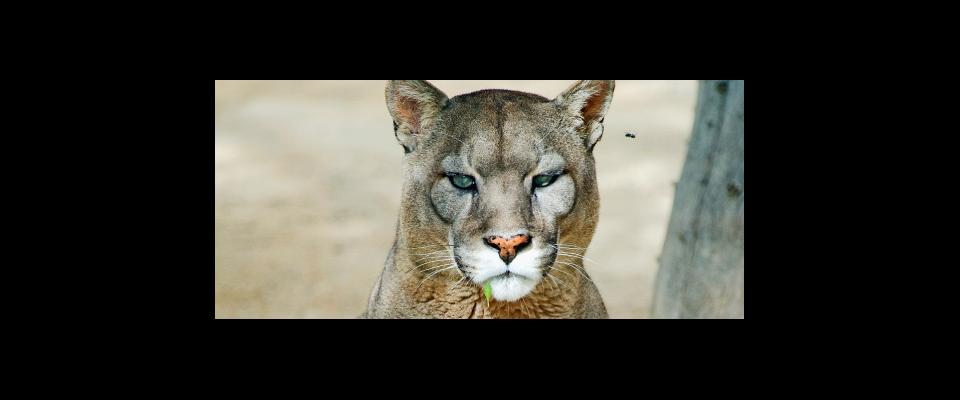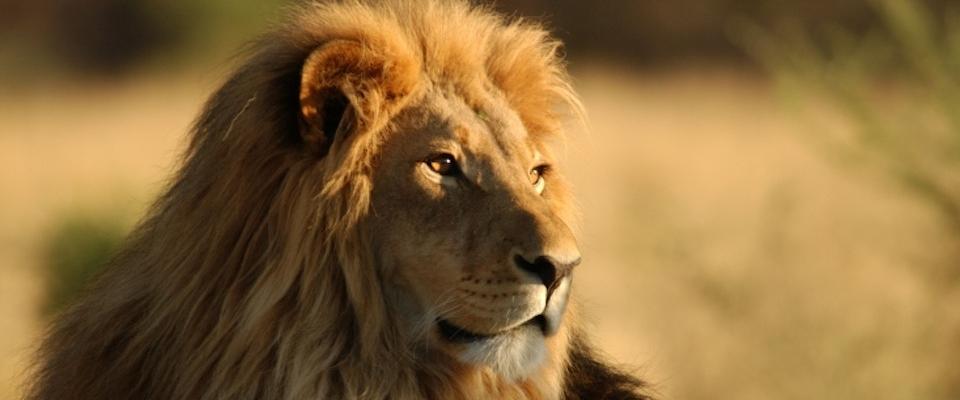The African lion is on the ropes. Lions numbered close to 100,000 in 1960 and have since dropped to around 20,000, according to conservation experts. And this trend likely is accelerating, as people continue to convert wildlife habitat into grazing commons and croplands, poach lions for claws and bones to supply the illicit international animal parts trade, and poison big cats and other predators to protect their livestock.
There’s been much discussion about just what it’d take to save lions. Now we have a pretty good idea: around $1 billion to $2 billion a year. That’s the conclusion, at least, of new research published in the Proceedings of the National Academy of the Sciences and supported by several conservation organizations.
California talked with Jennie Miller, a lead co-author of the PNAS paper and a former postdoctoral researcher at UC Berkeley’s College of Natural Resources, and Laurence Frank, a research associate with Berkeley’s Museum of Zooology, the director of the conservation NGO Living with Lions, and a peer reviewer of the paper.
Dr. Miller, much of your research focused on the importance of increased funding for so-called protected areas (PAs)—established parks and reserves. Could you speak to that?
Miller: Lions haven’t just suffered drastic declines in numbers—their current distribution only occupies eight percent of their historic range, and a significant portion of that range is in protected areas (PAs). PAs are the cornerstone for African conservation, in fact. So our research focused on PAs, and we found that lions aren’t doing well even there. A major cause for this is underfunding. Managers simply don’t have the money they need to effectively address human threats [such as poaching and illegal livestock grazing].
Frank: As the paper points out, park managers are so short on resources that they can’t provide any degree of real protection that would be recognizable in the West. They just have too few people, too few vehicles, and too little support and motivation. To be fair, all public sectors [in Africa] are in the same fix—health, education and transportation. So wildlife conservation is just a very low priority in most countries. There’s never enough money for it.
How did you arrive at price tag of $1 to $2 billion to ensure effective lion conservation?
Miller: We examined the costs of managing 282 protected areas that still have lions. And it should be noted that while lions are the focus, we’re talking about habitats that support a vast number of other wildlife species. So we used lions as a proxy for African wildlife generally. We compiled a one-of-a-kind dataset of the current costs of managing PAs and compared this to [their] required costs for effective management. [This allowed us] to estimate the total required costs and current shortfalls of saving lions and associated wildlife.

We used three estimates of effective management costs to generate lion conservation funding ranges: $978 per square kilometer based on budgets we received from the African Parks Network, $1,271 a square kilometer based on a model we developed evaluating the costs of conserving lions at about 50 percent of [habitat] carrying capacity, and $2,030 per square kilometer based on costs associated with managing lions in unfenced PAs. We then applied those figures to PAs with lions and found that PAs with lions need a minimum of $1.2 billion to $2.4 billion a year, or from $1,000 to $2,000 per square kilometer annually.
Along with saving lions, funding real protections for these areas also provides economic opportunities for adjacent communities—local people can get jobs in the parks and reserves or in lodges and hotels that serve people who come to view the wildlife.
$1 to $2 billion a year is real money, but it doesn’t seem like an insurmountable goal. As I understand, though, the problem in Africa often isn’t about raising money—it’s about ensuring it gets to where it’s needed, that it isn’t diverted to corrupt officials. How significant is this problem?
Frank: Most Americans are unaware of the depth and breadth of corruption in Africa. Any money devoted to anything tends to be diverted. That said, I don’t want to give the impression that corruption is the only or biggest problem. The areas that need proper protection are vast, and even well-resourced and honest government agencies would be spread way too thin. Also, it’s obvious that westerners cannot do anything if they are not welcomed by the governments. Sometimes national pride gets in the way, sometimes [officials] might be fed up with criticism by outsiders, and sometimes they just don’t want anyone looking too closely at what goes on. The existence of western expertise does not necessarily make it welcome.
Also, a lot of the NGOs spend their money on nonsense. Born Free, for example, spends an enormous amount of money beating up on trophy hunters. The overwhelming majority of lion conservationists feel that trophy hunting has a role in lion conservation—with the usual caveats. None of us like the idea of killing majestic wildlife, but hunting that provides benefits [such as jobs and meat] to local communities provides viable alternative uses to land development. [Hunting concessions] help prevent wilderness areas from being overrun by zillions of cattle or converted to intensive agriculture.
Miller: There is corruption in Africa, but you can’t paint Africa with one brush. There are good actors, and I don’t think holding money back out of concern for corruption is a sound argument per se. There are many examples of good results from collaborative partnerships between local communities and NGOs. And I can see some good possibilities for getting greater funding to protected areas [without the illicit diversion of money]—such as co-management with NGOs. We know that can be a strong and effective model that provides real transparency and attracts supporters and donors. There have been some real conservation success stories in recent years that can be credited to collaborations between governments, local communities and NGOs. Mountain gorillas in Rwanda are increasing, and so are giant pandas in China. Snow leopards have been downlisted by the IUCN from “endangered” to “vulnerable.”
As for trophy hunting, I do see a role for it, with the caveat that it needs to be properly managed. There aren’t a lot of studies on the transparent accounting of hunting concessions and local communities, but westerners need to consider culture in this context. There is a culture of trophy hunting in Africa, both from the perspective of rural [African] communities and [western professional and sport hunters]. There needs to be some sensitivity to this culture. When trophy hunting is conducted properly, some individual animals—a few dozen to a few hundred across the continent—are taken. That is sustainable, considering the base population of lions, and trophy hunters pay an enormous amount of money to take a lion, much of which can be directed to the communities.

I understand this is difficult for some people to accept. The furor over the Cecil the Lion episode [in which an American dentist legally killed a well-known lion in Zimbabwe] was intense. Animal welfare activism can hit a lot of hot buttons that affect conservation, but as I said, cultural values in the West and Africa are different. And when you’re talking about saving an entire species, I think sacrificing the few for the many can be appropriate. The majority of hunters I’ve talked to showed both great respect for and knowledge of wildlife. Poor professional hunters [who guide trophy hunters] are usually quickly identified and weeded out by the companies that hire them.
Frank: The bigger issue, really, is human population growth, which is putting great and growing pressure on existing protected areas. Africa’s population is on a trajectory from its current one billion to four to six billion by the end of the century. Already, there’s very little wildlife left, perhaps a fraction of one percent of what was there when Europeans arrived. So even with the best intentions by government and NGOs, keeping and protecting land set aside for wildlife is getting harder all the time. Tanzania has the most extensive set of protected areas in Africa, but the current president is degazetting some of them to make way for settlement and agriculture.
Miller: I’m not really privy to reproductive issues in Africa, but I worked in India for a long time in very densely populated areas, and the biodiversity there was remarkable, mainly because the Indians protected significant tracts of land. The local communities clearly weren’t just interested in seeing the dollars associated with their protected areas—they also had strong ties to the land.
Back to those figures: While $1 billion to $2 billion a year seems doable, just how do you do it?
Miller: The significance of this [PNAS] paper is that it provides more research-based and peer-reviewed information than ever before. We can now say just how much land and how many lions and how much money we’ll need to make populations stable. Using these new data as a guide for lion conservation will make a big difference. Also, our awareness of cultural issues has increased dramatically over time. The work we’re now doing with local communities wouldn’t even have been attempted 30 or 40 years ago, when there was still a colonial or even imperial quality associated with conservation. And as far as raising the money, there are a lot of extremely wealthy individuals in the world today. A few of them—even one of them—could fund the entire enterprise without any difficulty. And some of those people are UC Berkeley graduates. We’re inviting them to step up.





















